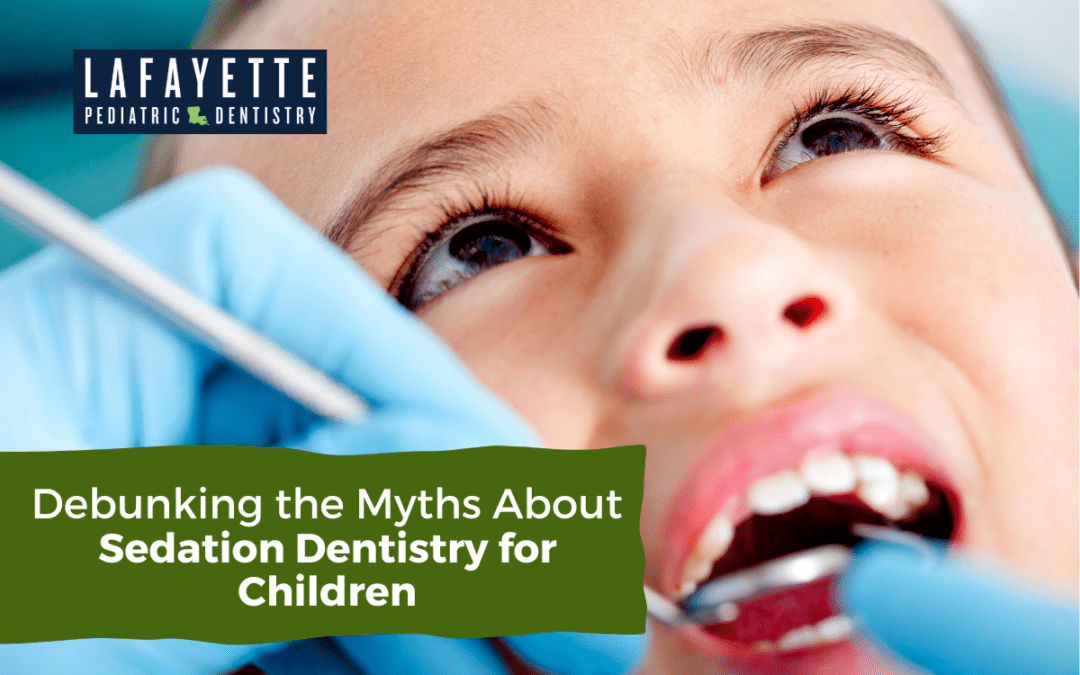Dental anxiety can be particularly daunting for children, turning even routine dental procedures into overwhelming or frightening experiences.
With sedation dentistry, children can receive necessary dental work in a comfortable and relaxing environment, alleviating their fears and ensuring a more positive experience.
However, there are myths floating around about pediatric sedation dentistry. You want the best for your child’s oral health, but misconceptions can stand in the way of making informed decisions.
In this blog post, we’ll tackle the most common myths head-on and give you the facts about sedation dentistry for children.
By the end, you’ll get the full picture of how sedation dentistry can be a game-changer for your child’s dental health, and you’ll feel more confident in discussing options with your pediatric dentist.
Myth 1: Sedation Dentistry isn’t Safe for Kids and Means Your Child is Being Put Under
“Is it really safe to sedate my child for a dental procedure?” Pediatric dentists who offer sedation are specially trained and adhere to strict guidelines to ensure your child’s safety.
They’ll carefully assess your child’s medical history and individual needs to determine the appropriate level of sedation.
When considering pediatric sedation dentistry, many parents wonder if their child will be completely unconscious.
The thought of your little one being totally unconscious can indeed be unsettling, but the reality of sedation is more nuanced. The majority of sedation cases are done with your child fully awake!
There is a range of sedation techniques, which include:
- Mild sedation with nitrous oxide (laughing gas): your child is fully awake and alert but is given just a little bit of the gas to help them relax if they have slight anxiety or a sensitive gag reflex that makes dental work difficult to tolerate
- Moderate conscious sedation: your child is given an oral medication to help them relax a little more, but is still fully awake and responding to instructions, with their vital signs being monitored
- General anesthesia: for more complex procedures, where your child is fully asleep. A medical professional is involved in administering the sedation, and does so only after a thorough evaluation to ensure it’s the safest and most appropriate option for your child’s needs.
Throughout the treatment, your child’s vital signs, such as heart rate and oxygen, will be closely monitored.
So, you can rest assured that pediatric sedation dentistry is a trusted and secure option for helping your child get the necessary dental care without the fear and anxiety. You can learn more about the different levels of sedation dentistry here.
Myth 2: Sedation Dentistry is Just for Anxious Kids
You might think pediatric sedation dentistry is only for children who are afraid of the dentist. While it’s true that sedation can significantly ease dental anxiety in kids, that’s not the only reason for its use.
A pediatric dentist might recommend sedation for various reasons beyond anxiety. Perhaps your little one needs extensive dental work in one session, and sitting still for that long is a tall order.
Or maybe your child has special needs, is sensitive to sounds or tastes, or is very young, which makes dental treatments a bit more challenging. In these cases, sedation can help ensure your child gets the dental care they need without the stress and struggle.
Of course, your pediatric dentist will take the time to understand your child’s unique needs and work with you to determine if sedation is the right choice.
Myth 3: Sedation Dentistry Leaves Lasting Side Effects
“Will sedation have long-term effects on my child?” It’s another common concern for many parents considering pediatric sedation dentistry.
But here’s the truth: the medications used for sedation dentistry are carefully selected and dosed by qualified medical professionals to minimize side effects. While your child might feel a bit groggy, dizzy, or nauseous after the procedure, these effects typically wear off within a few hours.
It’s akin to waking up from a deep nap. Your child may be a little disoriented at first, but they’ll be back to their usual self before you know it. In rare cases, prolonged side effects can occur, but your pediatric dentist will give you clear instructions on how to manage these and when to reach out for help.
The key is to keep a close eye on your child after the procedure and inform your dentist if any side effects persist longer than expected.
Wrapping Up
When it comes to your child’s dental health, you want to make the best choices possible. We hope this blog post has helped clear up some of the misconceptions surrounding sedation dentistry for kids.
If you’re unsure about sedation, don’t hesitate to voice your concerns. Your pediatric dentist will guide you through the process and answer any questions you may have.
And if you have more questions about pediatric sedation dentistry, don’t hesitate to give us a call! Our Lafayette pediatric dental office is dedicated to serving families not only from Lafayette but also from the neighboring communities of Broussard, Carencro, Breaux Bridge, and beyond.
We understand that finding the right dental care for your child is a top priority, which is why we strive to create a warm, welcoming environment that puts both children and parents at ease.
